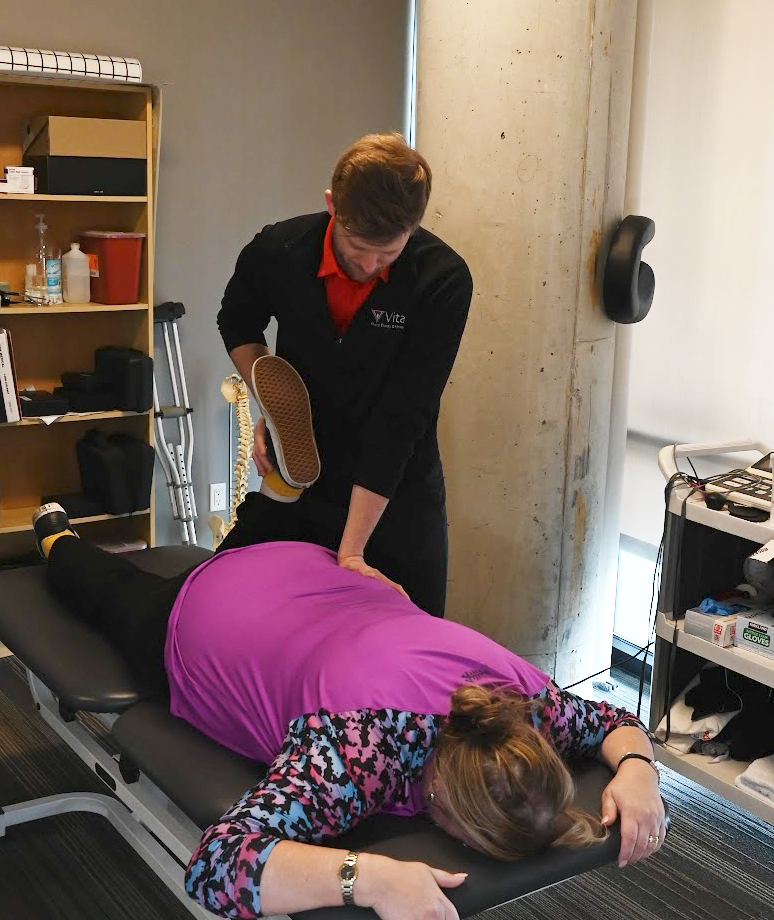Piriformis Syndrome
Piriformis syndrome causes pain or numbness in your butt, hip, or upper leg. It occurs when the piriformis muscle presses on the sciatic nerve. This can be due to injury, swelling, muscle spasms, or scar tissue in the piriformis. Pain generally disappears with rest and simple treatments in a few days or weeks.
The most common causes of piriformis syndrome are:
- Muscle spasms
- Scar tissue developing in the muscle
- Swelling in the piriformis or the tissues around it
- Climbing stairs, walking or running without strong enough piriformis muscles.
- Injuring the hip, butt or leg, such as a fall or car accident.
- Having tight muscles from lack of physical activity.
- Lifting something improperly and damaging the piriformis muscle.
- Not warming up before physical activity or stretching properly afterward.
- Overexercising or performing repetitive motions, such as long-distance running.
- Sitting for long periods of time (for example, people who sit a lot on the job).

Contact Us
Signs & Symptoms
Piriformis syndrome symptoms occur in the butt, hip or upper leg with feelings such as:
- Aching
- Burning
- Pain – constant or shooting
- Tingling
- Numbness
Symptoms when performing simple activities such as:
- Sitting for long periods
- Walking or running
- Climbing stairs
How Physical Therapy Can Help
The physical therapists at Vita will work with you to design a specific treatment program to speed up your recovery from your hip replacement surgery. A well-designed PT and exercise program will help improve hip stiffness and restore range of motion, improve muscle strength in and around the hip, and help you regain balance as you continue to walk and improve.
Typically, the program will include the following:
- Immediately employ RICE therapy (Rest, Ice, Compression, Elevation) and take anti-inflammatory over-the-counter pain medication upon checking with your primary care doctor or us
- Pain reduction techniques such as massage, dry needling and kinesio taping
- Stretching and strengthening of the muscles around the hip and buttocks
- Gait training exercises in order to return to normal gait patterns
- Cross training guidance and progression to full activity
